Best Wood Stove for Off-Grid Living
- November 2, 2023
- 1 comment
Choosing to embark on an off-grid lifestyle is a bold and transformative decision, filled with both challenges and rewards. Among the myriad considerations for off-grid living, maintaining a steady, reliable source of warmth is paramount, particularly in regions where the mercury takes a plunge. Throughout history and across diverse cultures, the wood stove has been celebrated as a cherished beacon of warmth and comfort. Its gentle, radiant heat, coupled with the soothing crackle of burning logs, makes it a favorite among off-gridders.

But with the plethora of options available in the market, how does one sift through the noise and pinpoint the perfect wood stove tailored for off-grid living? Fear not! In this article, we’re diving deep into the world of wood stoves, dissecting the factors that matter most, and spotlighting some of the most acclaimed and efficient stoves ideal for those serene, off-grid havens.
List of Best Wood Stoves for Off-Grid Living:
- Morso 1410
- Vermont Castings Encore FlexBurn
- Jotul F 50 TL Rangeley
- Pacific Energy Super 27HD
- Woodstock Soapstone Fireview
- Blaze King Ashford 30.2
Whether you’re nestled in a snowy mountain retreat, living amidst a forested expanse, or stationed in a lakeside cabin, there’s a wood stove waiting to complete your off-grid dream. Let’s journey together to find that perfect match!
Understanding Wood Stoves for Off-Grid Living
Traditional Wood-Burning Stoves

Traditional wood-burning stoves are the epitome of classic heating. Fueled by locally sourced wood, these stoves promise a sustainable way to heat homes, blanketing spaces in a warm, cozy ambiance. Especially when crafted from materials like soapstone or cast iron, these stoves are adept at storing and slowly releasing heat, providing comfort long after the flames subside. However, they do come with responsibilities. Regular cleaning is paramount to prevent hazardous creosote build-up, and during colder stretches, the task of adding wood can become frequent. Additionally, a spacious storage area for seasoned wood is a must-have.
Pellet Stoves
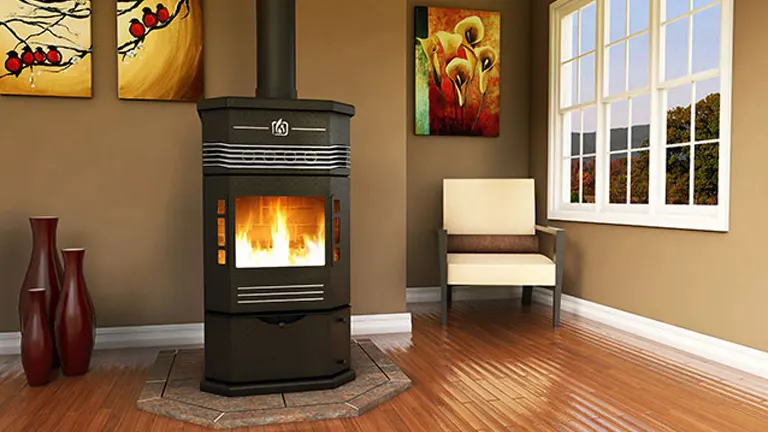
A contemporary take on wood heating, pellet stoves operate on processed pellet fuel. Their standout feature is the automation many models boast, reducing the manual input required. Pellets, when burned, often achieve higher efficiency levels than traditional logs, and the residual ash is minimal. But these stoves have their challenges. The reliance on processed pellets might pose availability issues, and many pellet stoves require electricity for their automated mechanisms, which could be a dilemma in strictly off-grid settings.
Gas Stoves (Wood Gasification Stoves)

Gas stoves, particularly those employing wood gasification, present an innovative heating solution. By turning wood into gas, these stoves achieve a cleaner burn, extracting more energy from every piece of wood. This results in enhanced efficiency and diminished particulate emissions. However, their sophistication can be a double-edged sword. They are mechanically intricate, which may translate to more involved maintenance. Furthermore, the wood used must be well-seasoned to facilitate effective gasification.
Hybrid Stoves

Merging the best of various worlds, hybrid stoves are a testament to versatility in heating. They incorporate elements of both catalytic and non-catalytic combustion, offering efficient heating through secondary burn tubes and catalytic combustors. This combination yields high efficiency and lowered emissions. However, their advanced design often comes with a higher price tag. And with more components in play, maintenance might be a tad more rigorous.
Why Choose a Wood Stove for Off-Grid Living?

- Sustainability: Wood stands as one of the most sustainable fuels. When sourced from nearby areas or sustainably managed forests, its use significantly reduces the carbon footprint. Additionally, wood decomposes naturally, ensuring that it doesn’t contribute to long-term pollution if not burned.
- Independence: Opting for a wood stove grants a level of self-reliance that’s paramount in off-grid living. By depending on wood for heat, homeowners detach themselves from the unpredictability of utility companies, avoiding both unexpected blackouts and fluctuating gas or electricity prices.
- Cost-Efficiency: Wood stoves are not only affordable to purchase but also economical to operate. Especially when the wood is sourced locally, or even better, from one’s property, the costs associated with heating can be substantially reduced compared to other heating methods.
- Ambiance: Beyond the tangible benefits, there’s an intangible allure to wood stoves. The gentle flicker of flames, accompanied by the rhythmic crackling of wood, crafts a warm, inviting atmosphere. This ambiance becomes a centerpiece in homes, fostering moments of relaxation and connection.
- Multi-functionality: Many wood stoves aren’t just heaters. They double up as cooking platforms, water heaters, or even baking ovens. This dual utility amplifies their value in off-grid settings, where resource optimization is key.
Factors to Consider When Buying a Wood Stove
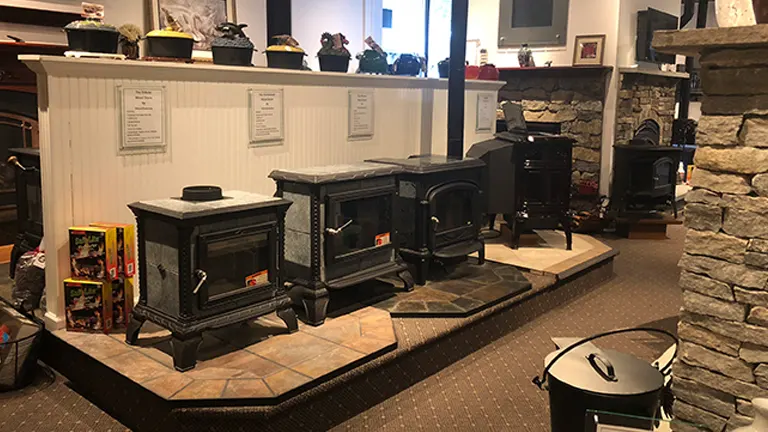
- Heating Capacity: The stove’s capacity should align with the size of the space you aim to heat. Begin by measuring the square footage of the area and then cross-reference this with the stove’s heating capacity specifications. It’s crucial to strike a balance; an undersized stove won’t provide sufficient warmth, while an oversized one could overheat the space and waste wood.
- Efficiency: Efficiency dictates how well the stove converts wood into heat. A more efficient stove not only provides better warmth but also ensures you burn less wood over time, leading to cost savings and reduced manual effort.
- Emissions: For those mindful of the environment and health, emissions play a pivotal role in the decision-making process. EPA-certified stoves stand out in this regard, as they emit substantially fewer pollutants. These stoves are designed to burn wood more completely and cleanly, reducing the release of harmful particulates into the air. This is not only a boon for outdoor air quality but also ensures that indoor air remains cleaner, benefiting the health of the home’s inhabitants.
- Build Quality: The longevity and performance of a wood stove are significantly influenced by its build quality. Stoves crafted from cast iron or thick steel are renowned for their durability. They retain heat effectively and radiate it uniformly across the space.
- Features: Modern wood stoves come equipped with a variety of features designed to enhance user experience. An air wash system, for instance, helps keep the glass window clear, allowing homeowners to enjoy the mesmerizing dance of flames without frequent cleaning. Ash pans simplify the task of ash removal, while features like secondary combustion optimize the burn process, leading to reduced emissions and more efficient heat output.
Top Wood Stoves for Off-Grid Living
1. Morso 1410
A compact yet robust cast iron stove, the Morso 1410 is tailor-made for smaller off-grid cabins. What it might lack in size, it compensates with its classic design, advanced secondary combustion system, and heating capacity that covers up to 1,000 sq ft.
2. Vermont Castings Encore FlexBurn
An embodiment of versatility, the Encore FlexBurn can comfortably heat spaces up to 2,400 sq ft. Its dual burning modes – catalytic and non-catalytic – cater to varied burning preferences. Additional features like top-loading and the ever-clean glass window enhance user convenience.
3. Jotul F 50 TL Rangeley
The Jotul F 50 is synonymous with endurance. Its spacious firebox minimizes the frequency of wood replenishment. With the capability to heat a staggering 2,500 sq ft, it’s a reliable workhorse for larger spaces.
4. Pacific Energy Super 27HD
A testament to performance, the Pacific Energy Super 27HD stands out with its commendable efficiency and heat output. Ideal for spaces up to 2,000 sq ft, it ensures warmth lingers with its extended burn time and precision air control.
5. Woodstock Soapstone Fireview
A fusion of aesthetics and efficiency, the Fireview showcases the beauty of burning wood through its generous viewing window. Crafted from soapstone, it’s not just about instant warmth; this stove retains and radiates heat long after the fire subsides.
6. Blaze King Ashford 30.2
Blaze King’s Ashford 30.2 is renowned for its impressive burn times, thanks to its advanced combustion technology. Its elegance is complemented by its power, comfortably heating large spaces and ensuring residents stay cozy during the chilliest nights.
Installation and Safety
- Professional Installation: The importance of having your wood stove installed by a certified and experienced professional cannot be overstated. A proper installation ensures not only the efficiency of the stove but also the safety of your household. A professional will ensure that the stove is vented correctly, that clearances meet safety standards, and that it operates optimally.
- Placement: It’s essential to ensure there’s a considerable buffer of space around your wood stove. This prevents heat from becoming trapped, which could be a fire hazard. The stove should always be positioned on a non-combustible hearth pad to shield the floor from sparks and heat.
- Chimney: An effective chimney is the lifeblood of a wood stove. A properly insulated chimney fosters efficient airflow, ensuring the wood burns optimally. Additionally, it plays a pivotal role in curtailing creosote buildup – a prime instigator of chimney fires. It’s essential to have a chimney suitable for wood-burning stoves, as not all chimneys are designed for the intense heat and byproducts of wood combustion.
- Maintenance: To prolong the life of your stove and maintain safety standards, regular cleaning is paramount. This extends from the stove itself to the chimney. Investing in a chimney cap is a prudent decision, as it bars debris or critters from entering, reducing blockages and potential fire risks.
- Safety: A wood stove, while a delightful addition, brings with it inherent risks. To mitigate these, ensure your home is equipped with smoke detectors and carbon monoxide alarms. These devices should be tested routinely. Furthermore, all flammable items – from furniture to draperies – should maintain a safe distance from the stove to avoid any mishaps.
Conclusion
Living off-grid doesn’t mean compromising on comfort. With the right wood stove, not only can you ensure consistent warmth, but you also enjoy the myriad benefits it brings, from sustainability to the pure joy of a wood-fired ambiance. Remember to prioritize your specific needs and space constraints when choosing the perfect wood stove for your off-grid haven.
FAQs
- Can a wood stove heat an entire house?
Yes, a wood stove can heat an entire house, especially if it’s well-insulated. The stove’s ability to do this depends on its size, efficiency, and the layout of the home. In open floor plans, heat circulates more easily. Some homes also use fans or specialized systems to distribute the stove’s heat throughout the house. - What kind of stove do the Amish use?
The Amish typically use non-electric appliances due to their religious beliefs that discourage modern conveniences. For heating and cooking, they often use wood-burning stoves or coal stoves. Additionally, some Amish communities use propane or natural gas stoves for cooking. - How big of a house can a wood stove heat?
The size of the house a wood stove can heat depends on the stove’s heating capacity, measured in BTUs (British Thermal Units). A small stove might heat a 1,000-square-foot area, while larger models can heat homes of 2,500 square feet or more. It’s essential to match the stove’s heating capacity to the size of the space for optimal efficiency. - Is it cheaper to run a wood-burning stove?
In many cases, running a wood-burning stove can be cheaper than using central heating, especially if you have access to an affordable or free wood supply. However, the actual cost savings depend on several factors, including the local price of wood, the efficiency of the stove, the cost of alternative heating sources, and how frequently you use the stove. - What are the disadvantages of a wood-burning stove?
Some disadvantages of a wood-burning stove include:- Maintenance: They require regular cleaning and maintenance.
- Wood Storage: Needing a place to store and season wood.
- Manual Labor: Chopping or buying, loading, and stoking the fire is labor-intensive.
- Safety Concerns: There’s a risk of fires if not used or maintained correctly.
- Environmental Concerns: They can produce pollutants, although modern stoves are designed to be more eco-friendly.
- Inefficiencies: In some designs, heat might not be evenly distributed throughout the home.
- Are briquettes cheaper than logs?
The cost difference between briquettes and logs can vary based on region, availability, and type. Briquettes, often made from compressed sawdust or other waste wood products, can sometimes be more affordable than hardwood logs. They also tend to burn more consistently and with less moisture. However, the price may change depending on the local market and the quality of the briquettes or logs being compared. It’s essential to compare costs locally to determine which is the more economical option.
Alright, folks, we’ve journeyed through the world of wood stoves and all the cozy warmth they promise for off-grid living. But hey, this isn’t just about what we think—what’s your take? Maybe you’ve got a wood stove tale to tell, or perhaps you’ve got a burning question (pun intended). Drop your thoughts, stories, and musings in the comments. Sharing is caring, after all! Thanks for hanging out and diving into this topic with us. Looking forward to hearing from all of you lovely people. Stay warm and keep the fire burning!

David Murray
Forestry AuthorI'm David Murry, a forestry equipment specialist with a focus on chainsaw operation. With over 13 years of experience, I've honed my skills in operating and maintaining a wide range of machinery, from chainsaws to log splitters. My passion for the outdoors and commitment to sustainable forestry drive my work, which emphasizes safety, efficiency, and staying updated with industry advancements. Additionally, I'm dedicated to sharing my expertise and promoting environmental awareness within the forestry community.



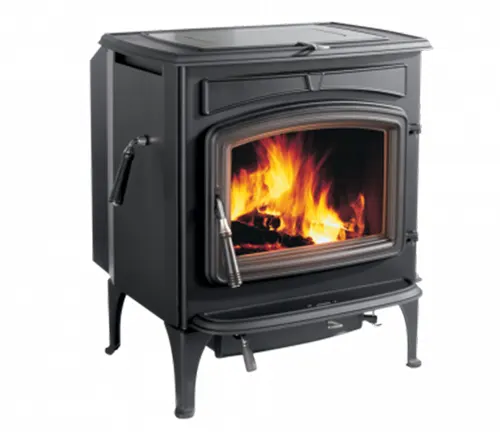


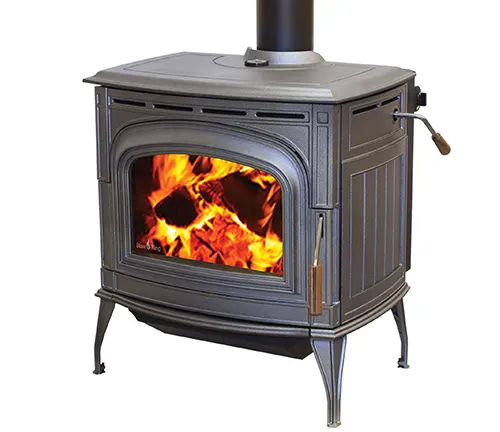


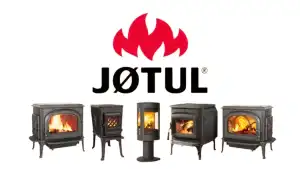









Good info presented in an easy to read and understand way. Thanks!
John Avery Warren
November 4, 2023 3:25 am